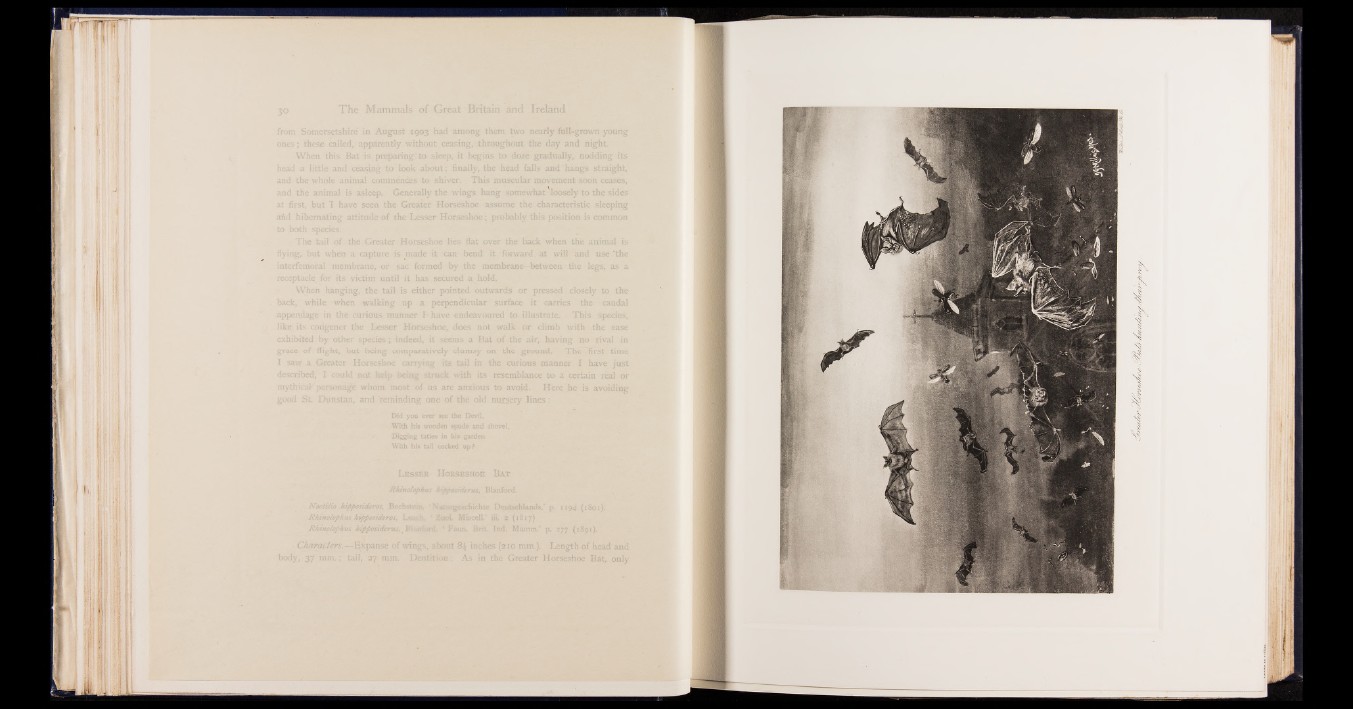
from Somersetshire in August 1903 had among them two nearly full-grown young
ones; these called, apparently, without ceasing, throughout the day and night.
When this Bat is preparing to sleep, it begins to doze gradually, nodding its
head a little and ceasing to look about; finally, the head falls and hangs straight,
and the whole animal commences to shiver. This muscular movement soon ceases,
and the animal is asleep. Generally the wings hang somewhat 'loosely to the sides
at first, but I have seen the Greater Horseshoe assume the characteristic sleeping
chid hibernating attitude of the Lesser Horseshoe ; probably this position is common
The tail of the Greater Horseshoe lies flat over the back when the animal is
flying,, but when a capture is made it can bend it forward, at will and use 'the
interfemoral membrane, or sac formed by ,the membrane—between the legs, as a
receptacle for its victim until it has secured a hold.
When hanging, the tail is either pointed outwards or pressed closely to the
back, while when walking up a perpendicular surface it carries the caudal
appendage in thé curious manner L have endeavoured to illustrate. This species,
like its congener the Lesser Horseshoe, does not walk or climb with the ease
exhibited by other species;. indeed, it seems a Bat of the air, having no rival in
grace of flight, but being comparatively clumsy on the ground. The first time
I saw a Greater Horseshoe carrying its tail in the curious manner I have just
described, I could not. help being struck with its resemblance to a certain real or
mythical personage whom most of us are anxious to avoid. Here he is avoiding
good St. Dunstan, and reminding one of the old nursery lines:
Bid you ever see the Devil,
With his wooden spade and shovel,
Digging taties in his garden
With his tail cocked up?
L e s s e r H o r se sh o e
Noctilio hipposideros, Bechsteio, ' Naturgeschichte Deutschlanc
Rhinolophus hipposideros, Leach, ' Zoo!. Miscejl.’ iii. 2 (1817)
Rkinolopkm hipposidenis, Blanfortl, 1 Faun. Brit. find. Mamm
- Characters.— Expanse of wings, about inches (210 mm.
body, 37 mm.; tail, 27 mm. Dentition: As in the Greatei